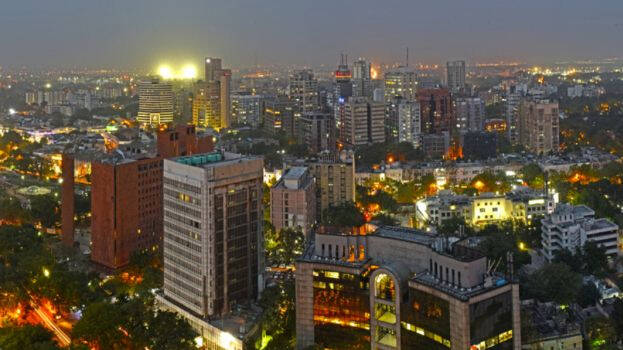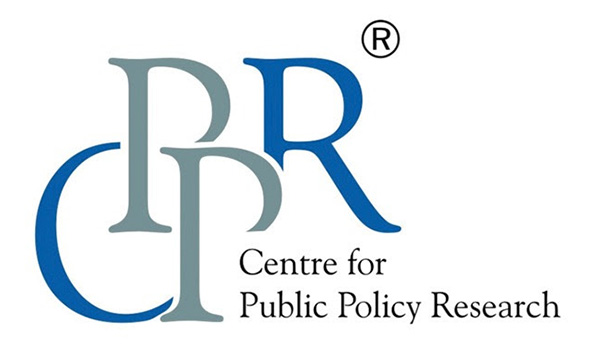Articles

West Bengal Elections: Understanding Nuances and Implications
April 22, 2021
CPPR Webinar on ‘West Bengal Elections: Understanding Nuances and Implications’
April 23, 2021Is litigation decelerating the process of urban development?

The rapid pace of urbanisation in the country magnifies the need for having adequate infrastructure facilities to support the massive growth of our cities. . The Centre and the State Governments have acknowledged the necessity to have the right infrastructure, which plays a dual role of not only providing services to the citizens and but also acts as a source of employment to many. The same is reflected in their budget documents of recent years. However, we often notice that some of the projects get repeatedly mentioned even after their expected date of completion. Such instances point out the need for probing into this. The delay in the completion of the public infrastructure projects time and again have also become a serious point of discussion due to huge cost overruns which has to be borne by the national exchequer. Litigation plays a prime role in such delays.
According to the Economic Survey Report 2017-18, a review of projects that suffered massive delays due to litigation in six ministries had cost the national exchequer more than Rs. 52,000 crores. Table below gives an idea of the volume of litigation in which various Central Government ministries are involved. With more and more investment expected from private players in this sector, eliminating barriers of this kind would increase the ease of doing business climate in the country. All of these highlight the need for analysing the causes and the reasons for litigations on priority basis, so that the ongoing and upcoming projects could be effectively dealt with.
Table 1 Pending cases among ministries as on 2017
| Ministry | No. of cases (approx.) |
| Railways | 66000 |
| Defence | 3000 |
| Health | 3200 |
| Urban Development | 2300 |
| Power | 115 |
| Shipping | 35 |
| Road Transport | 30 |
| Water resources | 240 |
| Steel | 460 |
Reasons for litigation
Litigation in public infrastructure projects could arise due to disputes with Public Sector Undertakings (PSUs), private entities (contractors, funding agencies, project management consultants, etc.), between government departments and public to name a few. The reasons identified for such disputes are mainly (but not limited to):
- Land related issues (land acquisition, rehabilitation, and delay in availability of land)
- Absence/delay of regulatory clearances (delay in obtaining approvals from multiple departments/agencies)
- Inadequate project preparation (projects that were viable otherwise turned unviable during execution; changes in plans, estimates, etc. post awarding the projects to private players, unreasonable contract conditions)
- Non-compliance of the contract due to:
- Uncertainties during implementation (based on on-ground situations)
- Poor quality of execution
- Public objections on the project
- Procedural delays (eg. Delay in finalization of contracts/loan agreements, timely payments)
It can be comprehended from the above mentioned points that these are merely ‘symptoms’ and not the ‘root’ causes of the issue. Increasing the capacity and efficiency of the legal system might reduce the symptoms for a while but it might not guarantee a sustainable solution.
Need for systemic change
The above mentioned reasons signal serious flaws within our existing institutional frameworks. The fundamental challenges could boil down to:
- Lack of coordination and ownership between multiple departments
- Availability of funds
- Lack of ready funds available with the Government for large transactions such as land acquisition
- Need for improving the financial capacities of investors
- Lack of technical skills and capacity within Government Departments to conduct thorough pre-execution studies (Eg. Feasibility Studies, Environmental Impact Assessments, Social Impact Assessments, Traffic Impact Assessment), develop detailed comprehensive documents/reports and ensure quality checks
- Lack of transparency and involvement of public (opinion) in the projects
Addressing these ‘root’ causes could minimize the delays and disputes paving way for litigation. Digital interventions and e-governance initiatives shall facilitate better coordination among agencies. Having an overarching body headed by the State’s highest authorities, to overlook the projects’ progress regularly can also be an answer to the coordination issue. Land remains a major topic of dispute not just among the investors and the landowners but also within the government institutional structure as well. The constant tussle between the Revenue department and the other departments involved in the land/project such as PWD, Railways, NHAI, Local Governments, etc. direct to the need for having a transparent land ownership records/database and having a single-point source (like a ‘landbank’) to offer information on land availability and its ownership. Adopting innovative policy instruments such as Transferable Development Rights (TDR) could potentially tackle land related issues, provided such policies are drafted carefully by understanding the context in depth. There is also a serious need to improve the financial capacities of the private investors by reviving PPP (Public Private Partnership) modes. This could be done by exploring innovative PPP models such as Hybrid-Annuity Models (HAM).
The technical skills and capacities of our Government departments and agencies should be upgraded. The existing staff members are overburdened with work; and they might not have ‘newer’ expertise/skills to take up challenges apart from the conventional ones. A previous study of ours found out that our Local Governments are devoid of qualified professionals like Project Management Specialists, Procurement Specialists, Urban Planners, Transport Planners, Environmental Engineers, etc. in their staff. Its cause could be traced back to ‘old’ Service Rules. Last but not the least, taking the public into confidence by ensuring transparency (by publishing all documents and reports in public domain) in the process is sure to have positive results. Public consultations and hearing shouldn’t be limited to mere procedural formalities but rather should be considered as platforms for deliberations.
Way Forward
Only with an effective change in the institutional system we could tackle the fundamental causes of delays and disputes which further culminates in litigation. Alternate Dispute Resolution (ADR) Mechanisms such as arbitration, mediation, negotiation, conciliation should be explored to fast track disputes and avoid litigation. Having a sector specific Quasi-judicial institution like a Tribunal (such as NGT, ITAT, etc.) at the State level exclusively to deal with infrastructure related disputes could also be an effective solution to hasten the litigation delays; provided such bodies have a fair representation of subject-matter experts in it. Such an ‘Infrastructure Tribunal’ could also apply various ADR mechanisms to further speed up the resolution process. Stringent regulation of the system and slow paced dispute resolution process existing in the country is limiting the involvement of private players in the infrastructure sector and keeping the foreign investment at bay. At the end, when an infrastructure project is facing litigation, it is the taxpayers’ money that is at stake without any productive outcome.
This article was first published in Kerala Kaumudi on April 22, 2021, Click here to read
Praseeda Mukundan is Senior Associate (Research) at Centre for Public Policy Research. Views expressed by the author are personal and need not reflect or represent the views of Centre for Public Policy Research.
Praseeda Mukundan is a Senior Research Associate at CPPR. She is an Architect, and Urban and Regional Planner from the School of Planning and Architecture, Bhopal. She can be contacted by email at [email protected]

